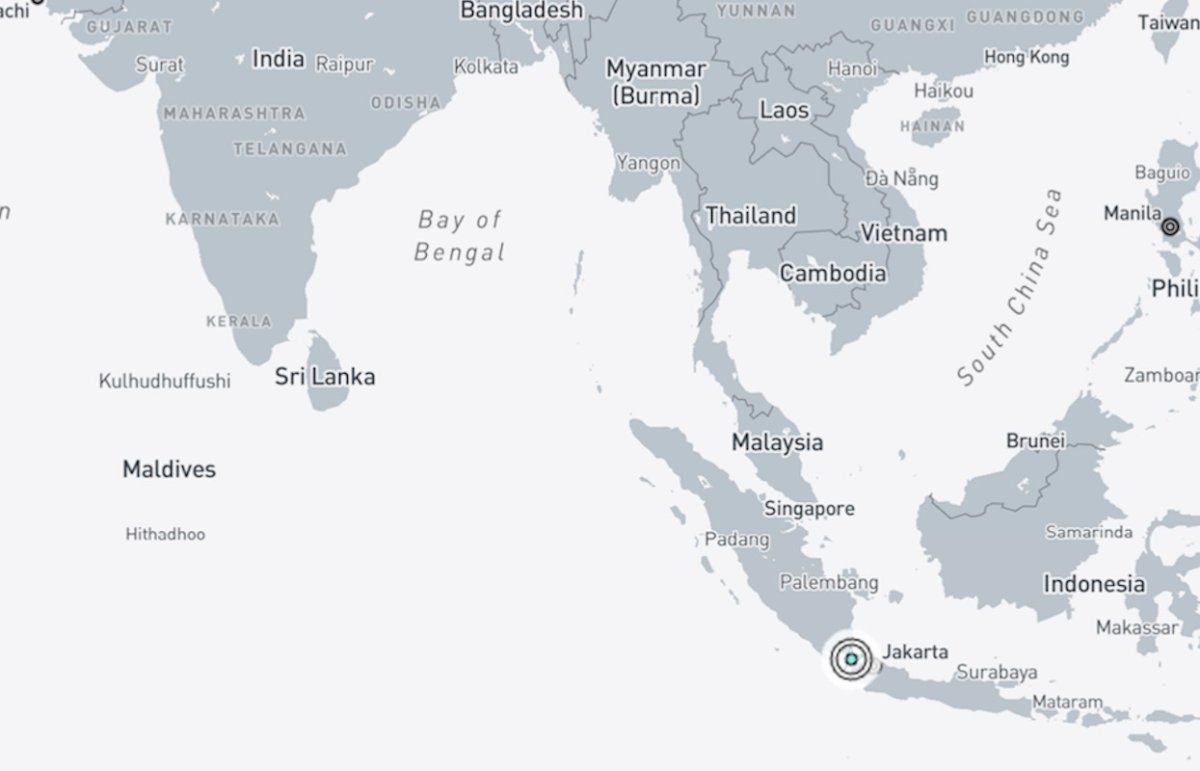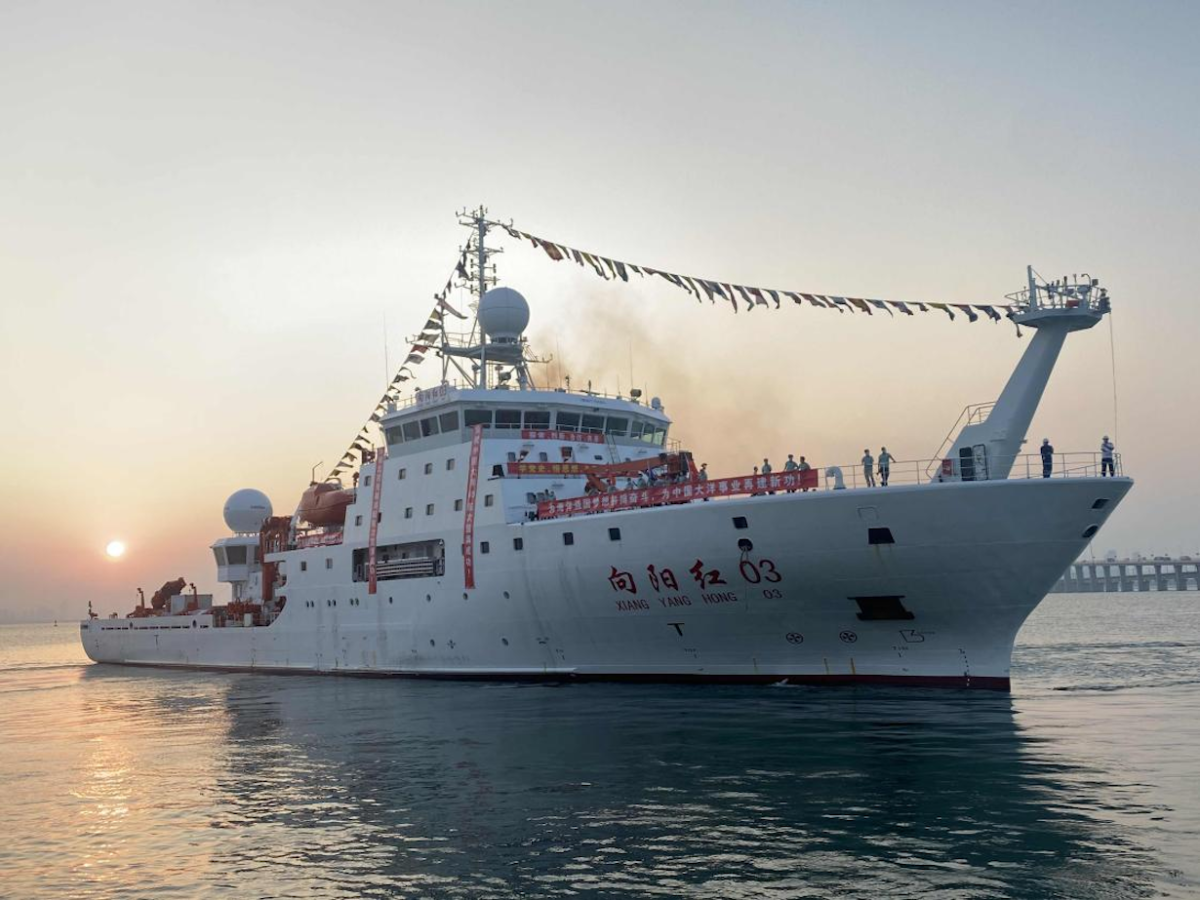
The Maldives has confirmed that a Chinese ocean research vessel, known to map the seabed for China’s submarine operations, will be allowed to dock at its main port early next month, an upcoming visit that has already stirred controversy in neighboring New Delhi for its strategic implications.
The announcement on Tuesday comes amid ongoing debates about the signifiance of China’s increased maritime presence and political influence in the Indian Ocean, a region of military and commercial importance historically dominated by India.
The Maldives Foreign Ministry, responding to reports classifying the Xiang Yang Hong 3 as a spy ship, said China’s request was for “rotation of personnel and replenishment.”
“The Maldives has always been a welcoming destination for vessels of friendly countries and continues to host both civilian and military vessels making port calls for peaceful purposes,” its statement said.
Late last year, Beijing was informed that the Xiang Yang Hong 3 would be denied access to Sri Lanka’s Colombo port for a full year in a decision widely seen as responding to India’s concerns surrounding the vessel’s oceanic exploration in the area.
Chinese state media at the time accused New Delhi of coercing the Sri Lankan government.
Maldives President Mohamed Muizzu has been open about deepening economic and other forms of cooperation with Beijing. Earlier this month, Muizzu visited cities including the Chinese capital, where he met President Xi Jinping and signed 20 agreements while elevating their bilateral ties.
Muizzu recently signaled his discomfort with New Delhi’s traditional influence over the region as his new government has warmed to Beijing. The Chinese leadership, in turn, has backed the archipelagic nation’s sovereignty and strategic autonomy.

MarineTraffic
Researchers believe the Xiang Yang Hong series of vessels form part of China’s dual-use maritime research effort to survey the seafloor and aid in the Chinese navy’s submarine warfare. The Chinese government nine of the class of oceanographic survey and research ships, whose names translate to “facing the red sun.”
Records captured on MarineTraffic, a ship-tracking service, showed the Xiang Yang Hong 3 left the port of Sanya in China’s southern Hainan province on January 16 and was expected to reach Male by February 8.
It was last seen leaving the Java Sea and entering the Indian Ocean on Monday, according to the website, which relies on automatic identification system, or AIS, data sent by vessels around the globe.
A January special report by the Center for Strategic and International Studies (CSIS) think tank in Washington, D.C., said China’s fleet of civilian research vessels—the largest in the world—supports the country’s scientific and commercial objectives, but are also used to further Beijing’s strategic goals.
The activities of the 4,864-ton Xiang Yang Hong 3, which is homeported in Xiamen eastern Fujian province, have been scrutinized by Western researchers in the past. Analysts believe the ship gathers intelligence for the Chinese People’s Liberation Army.
The vessel can accommodate up to 80 people from various units within China’s Ministry of Natural Resources, according to ship operator the Third Institute of Oceanography.
More than 80 percent of China’s 64 active research vessels showed suspect behavior or had links to organizations that support Beijing’s geopolitical agenda, CSIS said, noting concerns among regional players about the Chinese government’s intentions.

Third Institute of Oceanography
The Xiang Yang Hong 3 sought permission to survey waters near the Maldivian capital last year, India’s Hindustan Times daily newspaper said in December.
Abhijit Singh, a senior fellow at the Observer Research Foundation, a think tank in New Delhi, wrote this month in The Hindu newspaper that the research vessels study ocean floor topography to help with Chinese submarines operations.
“Studying the marine environment also aids in the development of systems that help Chinese submarines elude detection and fine-tune tactics for littoral combat,” Singh said.
Muizzu chose not to renew a 2019 hydrography pact with New Delhi when he assumed office last fall, said Singh. “Getting Indian hydrographic ships out of Maldivian waters appears intended to aid China’s marine surveys of the surrounding seas.”
India has long been wary of Chinese activities in the Indian Ocean, often ascribing military motives to Beijing’s ostensibly scientific expeditions. Recent tensions between officials in Male and Prime Minister Narendra Modi’s government also have not helped matters.
The Global Times, a Chinese state-run tabloid, this week criticized India’s concerns. In an op-ed published on Tuesday, it said Modi’s government had unfairly viewed China’s scientific research through the lens of national security.
“The Indian Ocean is not ‘India’s Ocean,’ and all countries have the right to conduct scientific research in the ocean as long as they comply with international law,” the paper said.
Beijing sees Muizzu as an ally; its recent diplomatic engagements with his government suggest as much. Prior to becoming president, Muizzu served as govenor of the China-led Asian Infrastructure Investment Bank and was involved in Belt and Road Initiative projects in the Maldives.
The Chinese and Maldives foreign ministries did not return Newsweek‘s written requests for comment.
Uncommon Knowledge
Newsweek is committed to challenging conventional wisdom and finding connections in the search for common ground.
Newsweek is committed to challenging conventional wisdom and finding connections in the search for common ground.

